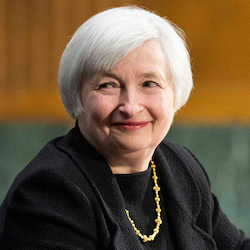 By Rand Paul and Mark Spitznagel The recent tumult in U.S. equity markets has prompted many analysts to urge the Fed to postpone any increase in interest rates. This advice assumes that rock-bottom interest rates are balm for a weak economy, with the only possible side effect being price inflation. Yet it is the Fed’s artificially low interest rates that set up the economy for the 2008 crisis, not to mention previous crises. The “doves” are right to point out that higher interest rates will lead to a repricing of many securities, aka a crash. But years of near-zero interest rates have made this inevitable. Continuing on the current course will only allow structural distortions caused by these interest rates to fester and an inevitable reckoning that will be much worse than seven years ago. The master fallacy underlying so much economic commentary is to imagine that a handful of experts in Washington should be setting the price of borrowing money. Instead, the Fed should set markets free. In their theory of business cycles, the Austrian economists Ludwig von Mises andFriedrich Hayek explained several decades ago that artificially cheap credit misleads entrepreneurs and investors into doing the wrong things—which in the current financial context includes making unsustainable, levered investments in risky assets, including companies loading up on debt to buy back and boost the price of their stock. Low interest rates may create an illusion of robust markets, but eventually rates spike, assets are suddenly revealed to be too highly priced, and debt unpayable. Many firms have to cut back production or shut down, unemployment rises and the boom goes bust. The Austrian diagnosis leads to an unorthodox prescription: Rather than provide “stimulus” to boost demand during a slump, the Federal Reserve and Congress should stand aside. Recessions are a painful but necessary corrective process as resources—including labor—are guided toward more sustainable niches, in light of the errors made during the giddy boom period. In 2000 the stock market, bloated by earlier Fed rate cuts, started falling when the tech bubble burst. Markets bottomed out in 2002, as the Fed slashed rates. Although people hailed then-chairman Alan Greenspan as “the Maestro” for providing a so-called soft landing, in hindsight he simply replaced the dot-com bubble with a housing bubble. When the housing bubble eventually burst, the crisis was much worse than in 2000. When Lehman Brothers failed in September 2008, it seemed as if the whole financial infrastructure was in jeopardy. And Fed Chairman Ben Bernanke followed the same playbook: cut interest rates. Read the rest at The Wall Street Journal [Subscription Required] Used with permission from The Wall Street Journal, WSJ.com. Copyright 2015 Dow Jones & Company, Inc. All rights reserved.
Comments are closed.
|
Archives
July 2024
|

 RSS Feed
RSS Feed



